Hazardous waste transportation is simply something your business cannot afford to get wrong. If the movement of hazardous waste is done improperly, it can lead to catastrophic results, even proving fatal if a big enough accident occurs. So this is a matter that can’t be taken lightly, especially if you’re new to having to deal with hazardous waste.
However, hazardous waste transportation — the moving of toxic byproducts from one place to another — isn’t an impossible undertaking as long as you have familiarity with Environmental Protection Agency (EPA) and Department of Transportation (DOT) regulations and can find a third-party logistics (3PL) company that is certified and compliant.
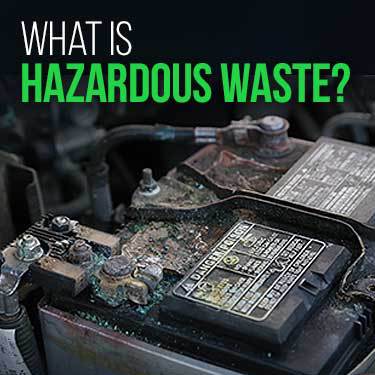
Hazardous waste doesn’t have a long or complicated definition: it is simply waste that is known to be harmful or dangerous to plants, animals, humans or the environment. For this reason, it can’t be handled the same way as regular waste.
This is because hazardous waste is a bit more complicated than normal garbage or waste. It is generally a byproduct of industry, whether it comes from the actual process of manufacturing or the end product after its usefulness has been exhausted. Things such as industrial waste or spent batteries shouldn’t be just thrown in the trash, but rather disposed of in a safe manner. It also does not come in one particular form.
It can be a solid, liquid, gas or even sludge. The form it comes in — which will be addressed momentarily — helps guide in exactly how it should be handled and disposed of. Transporting the waste and to where will also depend on what’s being done with it after it is collected. Some forms of hazardous waste can actually be recycled or be salvaged for parts. Others must be completely disposed of.
While the following list is not comprehensive, it is a good illustrator for the wide range of some regular household products that can become hazardous waste:
But hazardous waste isn’t just household items. In fact, businesses are some of the biggest producers of this type of waste, either as a byproduct of producing goods or even the products themselves.
Manufacturing in many forms contributes to this, which includes the following industries:
It’s plain to see that hazardous waste comes from many different outlets, so there is a demand to have a trusted partner to help handle it correctly and safely.
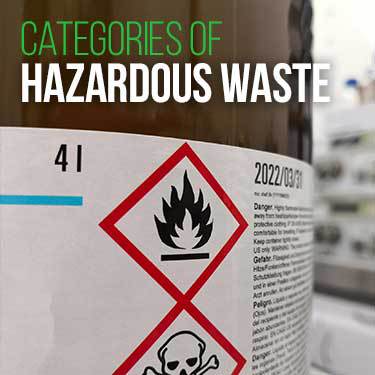
While the definition of hazardous waste was clearly laid out in the preceding section, with some real-world examples, it’s also important to understand exactly what makes the waste hazardous as far as the various governing agencies are concerned
Before we get to the transportation and disposal of hazardous waste, it’s helpful to know that the EPA assumes these materials have one or more of the following characteristics:
The reason it’s good to know the characteristics hazardous waste can exhibit is so people who need to transport it or have it transported can plan to do so in a way that is as safe as possible.
While all hazardous wastes pose their own risks, reactive wastes are potentially very dangerous based on one unique characteristic: their volatility. Because reactive waste is unstable, great care must be taken in order to transport these items.
But it’s a good practice to lay out exactly what can happen to reactive waste that can lead it to becoming unstable. The first property such a waste has is its instability, which can lead to sudden changes without an outside source such as combustion or detonation.
While a reaction without a catalyst is a scary thought, those moving reactive waste also have to make sure to keep it dry and cool since there is the possibility of the waste exploding or emitting toxic fumes when mixed with water. The same reactions can also occur if the waste is heated or compressed. According to the EPA, there are no ways to test reactive waste to see if they’re in danger of suddenly becoming reactive.
While this might sound like it could be similar to reactive waste, waste with displaying ignitability falls under more specific circumstances. For instance, this waste has a flashpoint of less than 140 degrees fahrenheit, can be spontaneously combustible and lead to fires. Common examples of this kind of waste includes used solvents, waste oils, gasoline, alcohol and acetone.
There are three different tests that can point out the ignitability of a waste:
Spontaneously combustible solids, compressed gases and oxidizers can also fall into this category of waste.
All hazardous wastes pose a threat to the environment and biological beings — plants, animals, humans — but waste exhibiting toxicity is acutely harmful when it is absorbed or ingested. This can be directly by people, plants or animals, or even the ground itself since groundwater can then be affected by the toxic waste and become harmful in this manner.
The last part is most likely to happen when this kind of waste is disposed of in a landfill setting where it can then leech into the ground. While many different chemicals or elements can cause toxicity, the ones most routinely present are those containing the naturally occurring elements lead or mercury. In sufficient enough amounts, mercury and lead can cause health problems and even death.
The reason the EPA has this separate classification is because the effects associated with being exposed to this classification of waste generally has more long-term impact on health that can take months or years to manifest themselves. The other three classes pose an immediate or sudden danger that can lead to injury or death for people, or destruction of the environment and property.
The Toxicity Characteristic Leaching Procedure is the only test which defines whether or not the waste in question is toxic.
Almost any example of a corrosive waste is going to be an acid since it will normally be a liquid that has the ability to eat through steel and has a pH level of 2 or less, or 12.5 or more. Battery acid, hydrochloric acid, sulfuric acid and nitric acid are common examples of what a hazardous material transportation company would expect to ship.
The danger present in waste with corrosivity is it can eat through containers and allow the leaking or spilling of materials that can cause harm. The only test available to determine whether or not a hazardous waste is corrosive is by using the Corrosivity Towards Steel method.
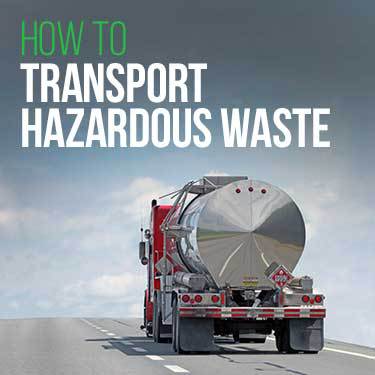
As mentioned briefly above, depending on the type of hazardous waste, there might be a different method for transporting it. But let’s first focus on why you should aim to have your hazardous waste transported in the appropriate manner.
The whole reason this article is being written is because it is both illegal and unethical to knowingly or even unknowingly dispose of hazardous waste in a way that can put people, the environment and other lifeforms at risk to be harmed. So it should be the main objective of any business to move its hazardous waste in the right way.
Other than the ethically questionable decision to improperly dispose of hazardous waste, there are significant monetary repercussions should a company choose — knowingly or unknowingly — to go that route. So that should be a secondary but still important concern to businesses. Also, if a company is found to be completely reckless in this regard, the EPA can also shut said business down completely.
Hopefully the deterrents in place, along with a desire to transport the right way, are enough to receive compliance. Now that that’s covered, let’s move on to the correct way
Anything considered to be hazardous waste has to be labeled, stored and shipped in accordance with the DOT’s regulations, which will be touched upon in greater detail in a later section. The regulations are in place to make sure that those handling these materials are doing so in a safe manner and with the utmost accountability. The DOT also takes guidance from the EPA to make sure that hazardous waste is disposed of and handled properly.
In fact, hazardous waste is a subcategory under hazardous materials and is also governed by the federal Hazardous Materials Transportation Act of 1975 (HTMA). More than 3,000 hazardous materials, which includes hazardous wastes, fall under this.
Those who are transporting hazardous waste on your behalf will be taking it to a landfill or similar facility to recycle or dispose of the products. For more complicated or dangerous waste, there are specialized facilities to take the items to. Hazardous waste has a variety of different ways it can be transported, as long as regulations are followed. Truck, rail, air, boat — they are all options.
As long as you’ve held up your end of the bargaining by properly labeling, marking and storing the hazardous waste, the responsibility for the transportation shifts to the company you’ve outsourced that responsibility to.
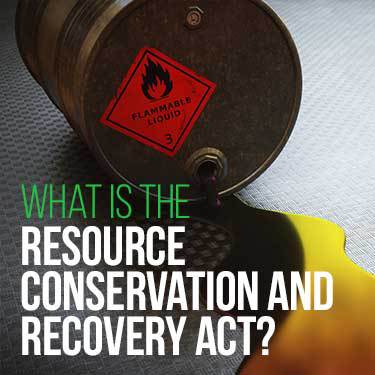
If you’re going to be having someone handle your hazardous waste, it might be helpful to acquaint yourself with the Resource Conservation and Recovery Act of 1976 (RCRA). This act deals with all waste, both hazardous and non-hazardous. At the very least, the company you choose to handle your hazardous waste should have intimate knowledge of the RCRA.
The ability to craft these laws was given by Congress to the EPA in order to comprehensively outline what parties trying to deal with their waste should do. Which part of the RCRA will cover the specific type of waste you’re trying to have transported will depend, of course.
In fact, 40 CFR (which stands for Code of Federal Regulations) has parts 260 through 273 that deal specifically with everything to do with just hazardous waste. Everything from a general overview of the management system to the standards for managing hazardous waste universally can be found in these parts.
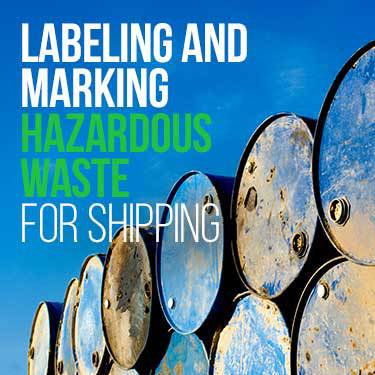
Each state may also have its own guidelines for the proper labeling and marking of hazardous waste but for the purposes of this article, we’ll focus mostly on the DOT’s requirements for making sure you’re able to be in compliance when moving your hazardous waste. First, no matter what kind of marking you use, it should clearly state that what’s being transported is HAZARDOUS WASTE.
The business or company must also be listed on the marking, as well as the exact date the waste was generated. This is important because hazardous waste can only be stored by you before being transported to the proper facility for a predetermined amount of time before you’re in violation. Your business’ information should also be listed so anyone who reads the marking can know where it originated from and who to contact in case of an emergency.
The labeling is a fairly standardized process. Using a 4-inch by 4-inch diamond-shaped placard with the correct symbols on it, your container will be clearly labeled. The labels should be fully visible, meaning there should be zero obstructions in viewing any part of them.
If you have multiple labels — for instance, if your hazardous waste is reactive and toxic — these labels should be about 6 inches apart and clearly convey to anyone who comes across it what hazards are associated with the handling of such waste. The secondary hazards should be below and to the right of wherever the main hazard label is.
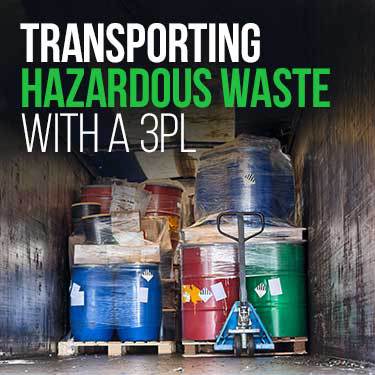
With all this information to process, the big decisions are not done yet. While you have a better idea how to handle getting your hazardous waste ready to be shipped, you have a final task which is of great importance — picking the right third-party logistics (3PL) company to take on the delivery and processing of your volatile materials.
Before you consider having your hazardous waste put on a truck, make sure the 3PL in question has plenty of liability insurance. For dangerous commodities like this. While most truckers or trucking companies are required to have a minimum of about $750,000, to be covered for the kind of problems that could occur should an accident take place, coverage for hazardous waste transport will need to be in the millions.
If that part checks out, then it’s time to pay attention to the mode of transportation. If a truck is used, for instance, it’s crucial to have an explanation on the precautions the 3PL will take. Some questions that should be asked include:
If you can’t get satisfactory answers to those questions, it doesn’t matter if that carrier is offering the cheapest prices around. You might end up paying much more in the long run. Also it is worth noting that not everyone is certified to handle the transport of hazardous waste. So make sure the 3PL you deal with is; you’re well within your right to ask them to provide proof of their credentials.
Now that you have a much more firm handle on hazardous waste transportation, it’s time for you to reach out to experts at R+L Global Logistics to provide the services you need
Our carriers are DOT-certified, which means we will adhere to every rule and regulation surrounding the transportation of hazardous materials. R+L Global Logistics drivers will go above and beyond in minding both these and EPA regulations to safely get your hazardous waste from one place to the next.
R+L Global Logistics has vast experience in using the correct marking and labeling required during the process and also knows how to properly dispose of the waste in a way that isn’t harmful. Whether it’s sludge, a solid, liquid or gas, and no matter what characteristic the waste falls under, we know how to deal with that kind of hazardous waste and transport it the right way so it can be mitigated anywhere throughout the United States.
So when you’re ready to undertake hazardous waste transportation, let R+L Global Logistics know how they can assist you. In the meantime, call us at 866.353.7178 for a free quote.
R+L Global Logistics
315 NE 14th St., Ocala, FL 34470